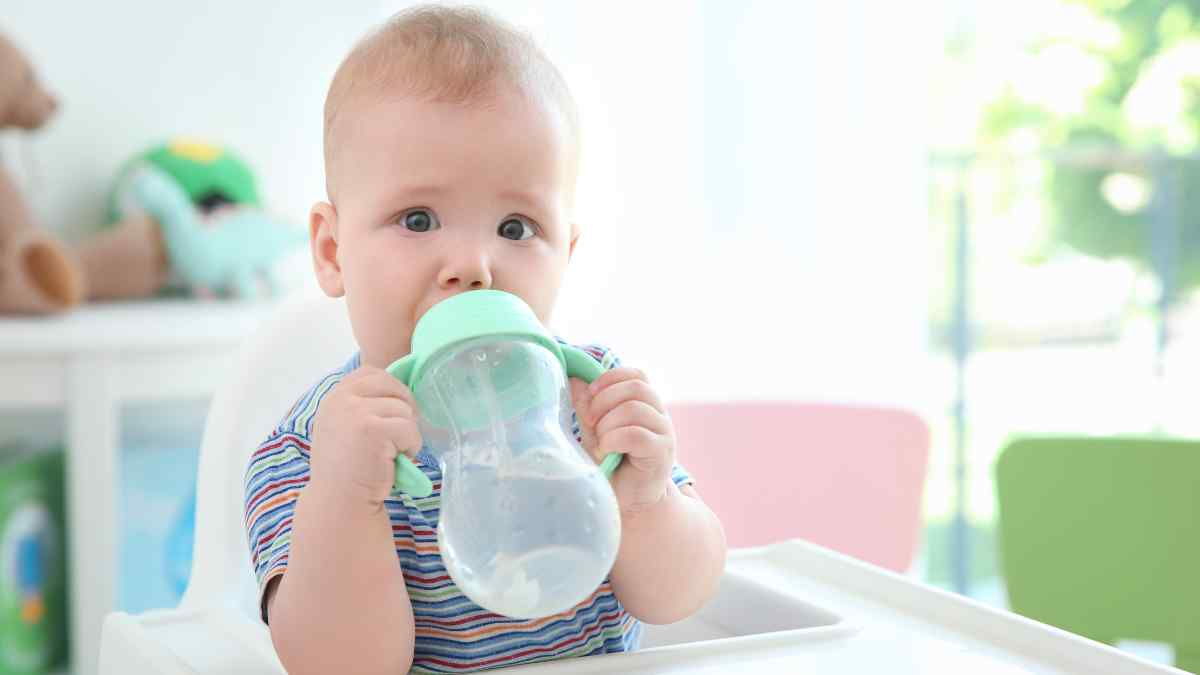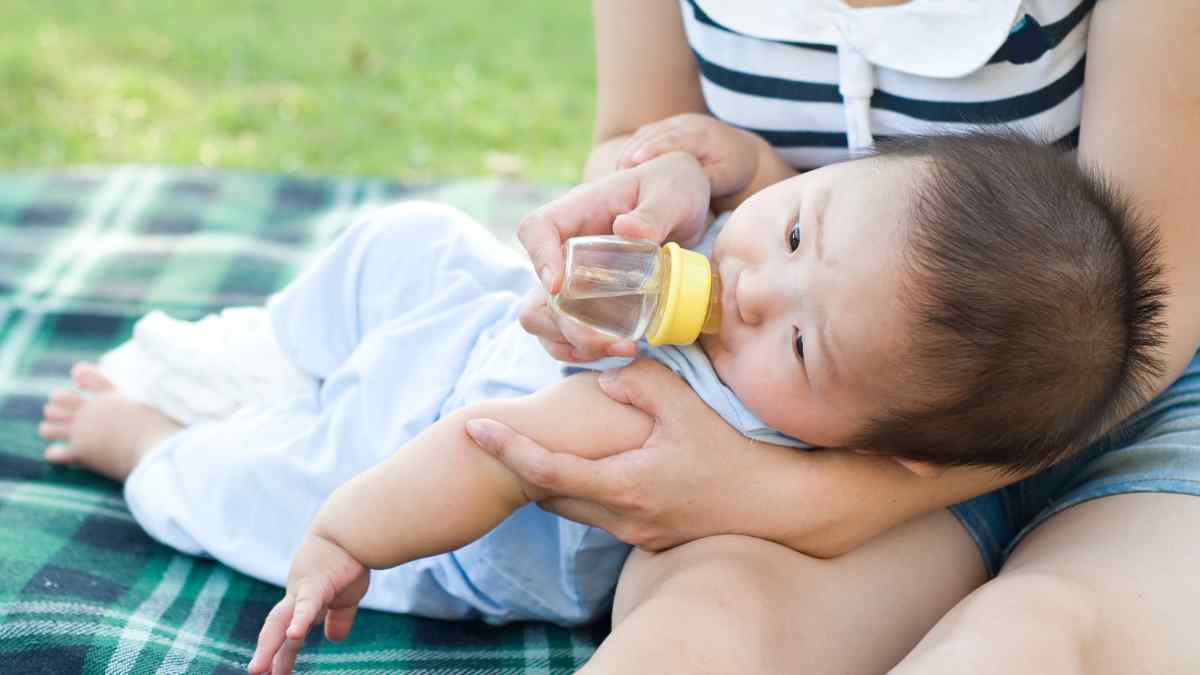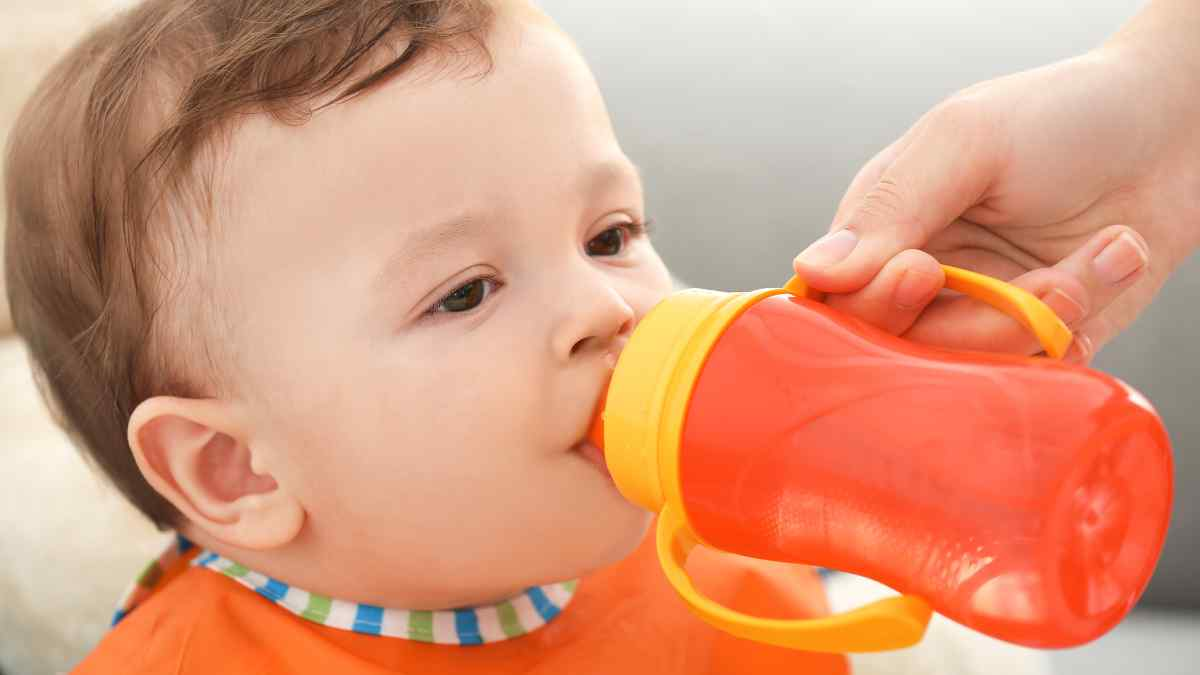Ah, the joys of parenthood! From the first smile to those tentative first steps, every moment is filled with discoveries and milestones. But, as with every adventure, there are challenges along the way. One such challenge that often goes unnoticed is ensuring your baby remains adequately hydrated. While we adults might sip on our water bottles routinely, for a baby, the world of hydration is an entirely new frontier.
Given the paramount importance of water for healthy growth and development, it’s essential to introduce it in a manner that’s both safe and enjoyable. But how do we transform the mundane act of drinking water into a fun-filled activity for our tiny tots? Whether you’re a new parent or just seeking creative ways to keep your baby happily hydrated, this article promises a splash of inspiration. Dive in, and let’s make hydration a delightful experience for your little one!

Understanding the Need for Hydration in Babies
Proper hydration plays a vital role in the health and well-being of individuals of all ages. However, for infants and young children, maintaining adequate water intake is crucial for numerous reasons.
Health Benefits of Proper Hydration
Drinking water, as we all know, is a fundamental aspect of staying healthy. Introducing drinking water throughout the day is essential for babies transitioning from a milk diet to solid foods. Here are the main health benefits:
1. Digestive Health: Proper hydration aids digestion, especially as babies start eating solid foods.
2. Temperature Regulation: Water helps regulate body temperature, ensuring your child doesn’t overheat, especially on a hot summer day.
3. Healthy Weight: Drinking water can play a role in maintaining a healthy weight. As kids grow older, they should naturally drink more water and fewer sugar-sweetened beverages to combat the rising rates of child and adult obesity.
4. Quenching Thirst Without Added Sugars: Water is the ideal choice to quench thirst without the risk of increasing sugar intake. Sugary drinks, while tempting, can lead to excessive sugar consumption, which can be detrimental in the long run.
Signs of Dehydration in Infants
Ensuring that your baby is getting enough water can sometimes be challenging. Here are signs to watch out for:
1. Fewer Wet Diapers: Babies who produce fewer wet diapers than usual might not be drinking enough water.
2. Dark Yellow or Brown Urine: If a child’s urine is a dark yellow or brown color, it might indicate dehydration.
3. Lethargy: A dehydrated child might appear more tired or lethargic than usual.
4. Dry Mouth and Lips: This is a clear sign that they aren’t getting enough fluids.

Making Hydration Fun and Healthy
To make sure your child is drinking enough water and developing healthy hydration habits:
1. Infused Water: Make drinking water fun by using different fruits and vegetables to infuse it. Filling a bottle with water and some slices of whole fruits can be an exciting way for toddlers and older kids to enjoy water.
2. Ice Cubes in Fun Shapes: Using ice cube trays that produce ice cubes in fun shapes can make water more appealing. Toddlers, especially those around 2 to 4 years old, might find it amusing.
3. Set an Example: Be a role model. Children naturally emulate adults. So, if they see you drinking water and choosing water over other drinks, they’re more likely to do the same.
How Much Water is Enough?
As a general rule, toddlers around 1-3 years old might need about 4 cups of beverages, including water and other drinks, daily. This intake increases to about 5 cups for kids around 4 to 8 years old. Of course, always ensure that the primary source is water.
Choosing the Right Tools for Hydration
As we’ve established the significance of hydration for babies, the next logical step is ensuring we have the right tools to help them embrace this essential habit. For many parents, this step is often where questions arise: Which sippy cup should I choose? When is the right time to introduce a bottle or transition from breastfeeding? Here’s a guide to help you navigate these waters.
Different Types of Baby Sippy Cups and Bottles
1. Spout Sippy Cups: These are the most common and resemble bottles but with a spout. It’s vital to make sure they are spill-proof, especially if your child is active.
2. Straw Sippy Cups: These encourage kids to sip through a straw. They are great for older children and can be a bridge between traditional sippy cups and regular cups.
3. 360-degree or Rimless Cups: These cups allow your child to drink from any edge of the cup, helping them transition to a regular cup.

Advantages of Using Colorful and Playful Designs
1. Stimulates Interest: Bright colors and playful designs can make the act of drinking water more appealing. Kids are naturally drawn to vibrant hues and intriguing patterns.
2. Engages Imagination: A bottle with a fun design can turn a hydration break into a mini-adventure. Imagine a cup adorned with whole fruits and vegetable designs, where each sip is a ‘bite’ from the fruit or vegetable.
3. Promotes Independence: A child might be more inclined to grab their special water bottle and drink on their own if they associate it with fun and enjoyment.
Transitioning from Breastfeeding/Bottle Feeding to Sippy Cups
1. Gradual Introduction: Begin by introducing the sippy cup with a familiar fluid, like breastmilk or the formula they’re used to. Over a few hours or days, as they become accustomed, you can introduce water.
2. Mixing Fluids: If your child is resistant, you can fill their sippy cup with a mix of milk and water, gradually increasing the water intake based on their acceptance.
3. Ensuring Proper Fluid Balance: While transitioning, make sure your child gets more fluids overall. This ensures they stay hydrated, especially if they’re still figuring out how to use the sippy cup effectively.
4. Avoid Sugary Drinks: While it might be tempting to introduce a sports drink or a juice to make the sippy cup appealing, it’s crucial to choose water or diluted natural fruit juices without added sugar. This promotes healthy hydration habits from a young age.
Flavorful Hydration
Having delved into the importance of equipping our little ones with the right drinking tools, it’s equally essential to consider the contents we’re filling those sippy cups and water bottles with. While pure water is undoubtedly the gold standard for hydration, there’s an opportunity to enrich this experience. Introducing varied, natural flavors to our kids’ hydration regimen not only makes drinking water more enjoyable but also sets the stage for cultivating a diverse palate.

Safe Ways to Infuse Water with Natural Flavors
1. Start Simple: Begin with just one fruit or herb to ensure your child doesn’t have any adverse reactions. This also helps them clearly identify and appreciate each new taste.
2. Fresh and Organic: Whenever possible, choose fresh, organic fruits and vegetables. This reduces the risk of introducing pesticides or harmful chemicals into your child’s drink.
3. Wash Thoroughly: Ensure all fruits, vegetables, and herbs are washed thoroughly to remove any contaminants.
4. Avoid Sugary Additions: While it might be tempting to add sweeteners for enhanced flavor, it’s best to avoid this. Natural fruits should provide sufficient sweetness, and we want to steer clear of introducing added sugars at a young age.
Using Fruit Slices or Herbs
1. Classic Combinations: Some renowned mixes include cucumber slices with mint or lemon wedges with rosemary. These blends offer subtle flavors without overpowering the natural taste of water.
2. Exploratory Mixes: As your child gets used to the basic infusions, you can experiment by adding strawberries, oranges, or even pineapples. The goal is to continuously expand their flavor horizons.
Benefits of Introducing Varied Flavors at a Young Age
1. Broadened Palate: Kids introduced to a variety of flavors early on tend to be less picky eaters as they grow. They develop an appreciation for different tastes.
2. Natural Over Artificial: By using natural infusions, you diminish the allure of sugary, artificial sports drinks. This instills healthy habits in children, ensuring they gravitate towards natural sources when they seek flavored drinks.
3. Awareness of Ingredients: Kids develop an understanding of fruits and herbs, recognizing their flavors, and this can be a stepping stone to them consuming these in solid forms as well.
Conclusion
Parenthood is an intricate dance of nurturing, teaching, and discovering. Every day, we are given opportunities to foster healthy habits in our little ones, and ensuring proper hydration stands tall among these tasks. From recognizing the pivotal health benefits of water to creatively introducing flavorful infusions, each step in this journey equips our children with the tools they need to thrive.
Making hydration an enjoyable experience is more than just a whimsical endeavor. It’s a foundational step toward fostering a life-long appreciation for health and well-being. As parents, when we prioritize and exemplify the importance of drinking water, we not only quench our children’s immediate thirst but sow the seeds of healthy habits that will nourish them throughout their lives.
So, the next time your child reaches out for their colorful sippy cup filled with delightfully infused water, take a moment to cherish the beauty of this simple act. It’s not just hydration; it’s a sip towards a vibrant, healthy future. Cheers to creating delightful, hydrating memories with our young ones!
Did this article help you? Please let me know! If you have any questions, please don’t hesitate to ask.



